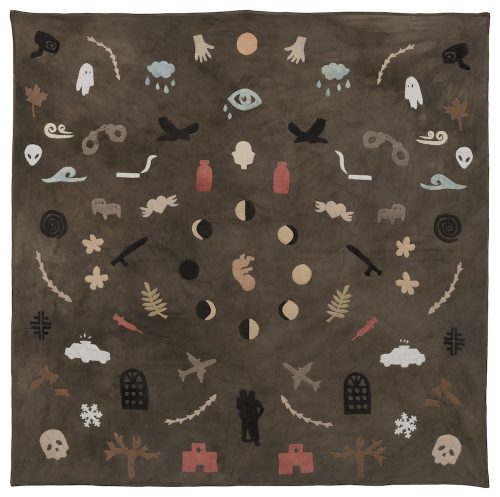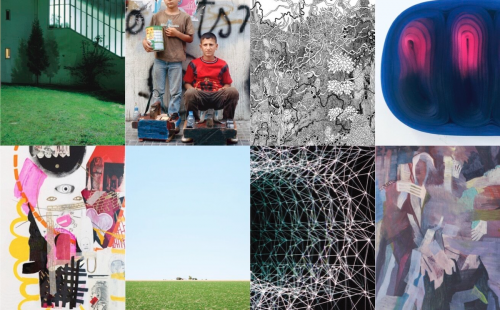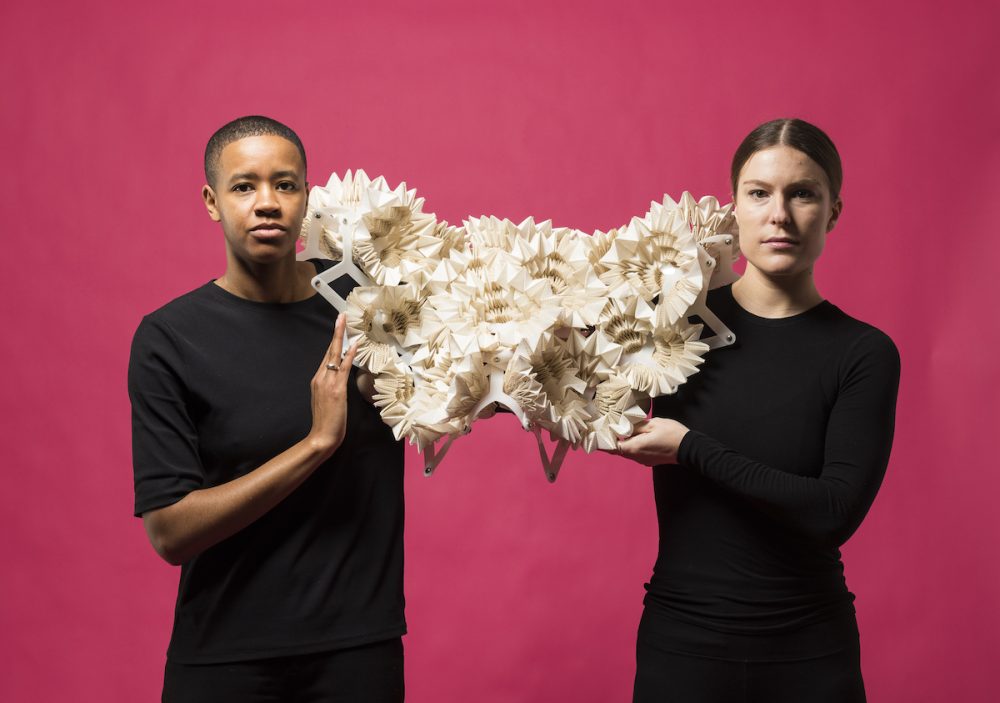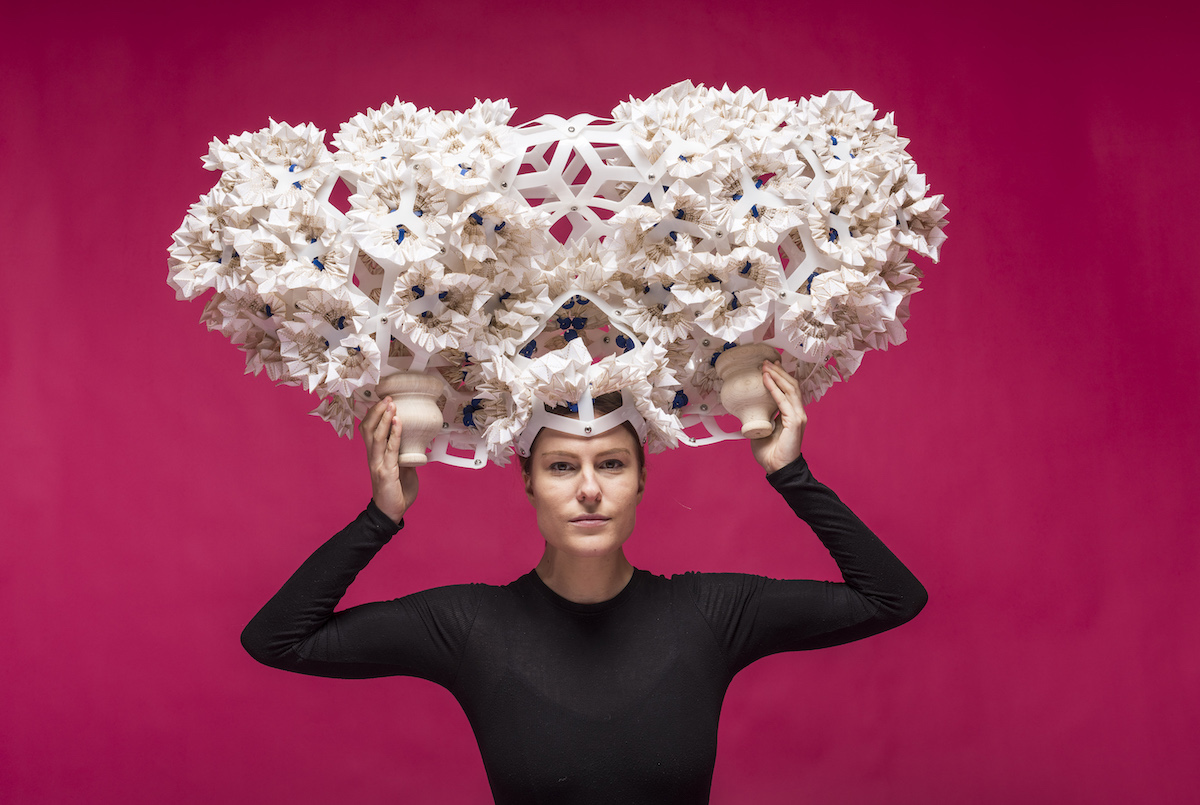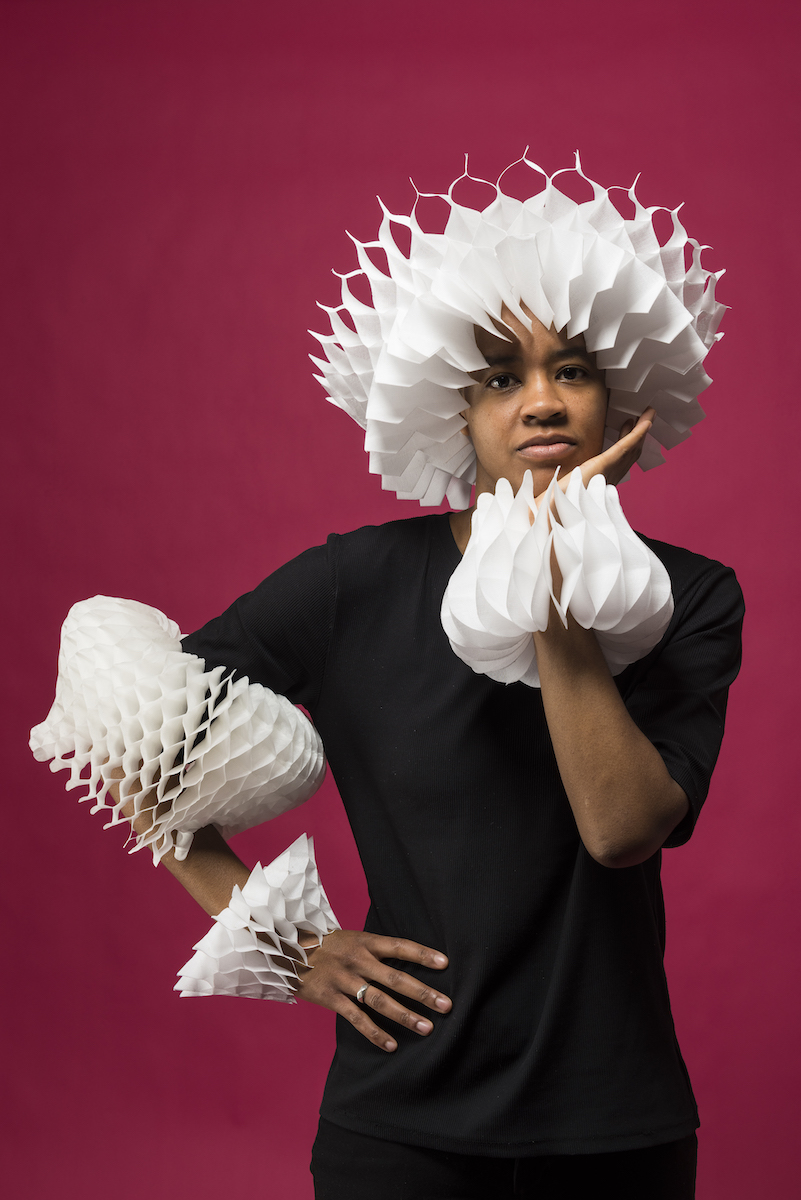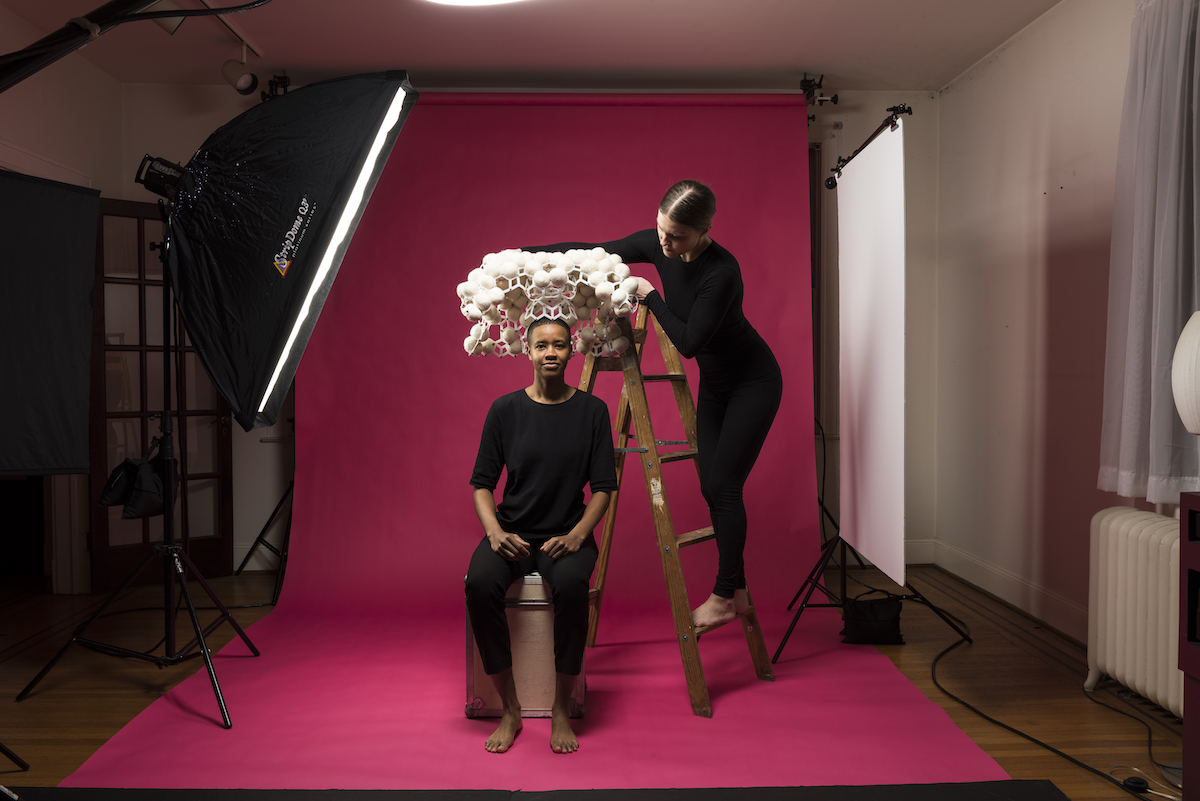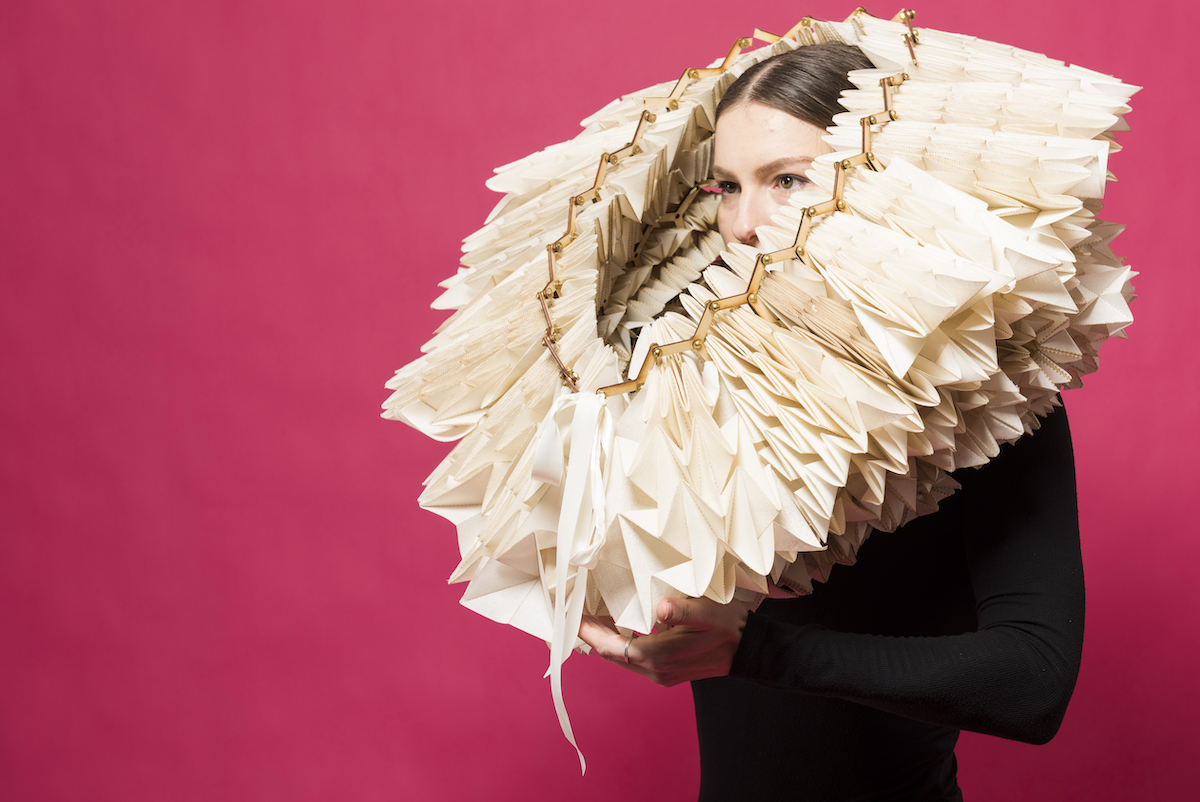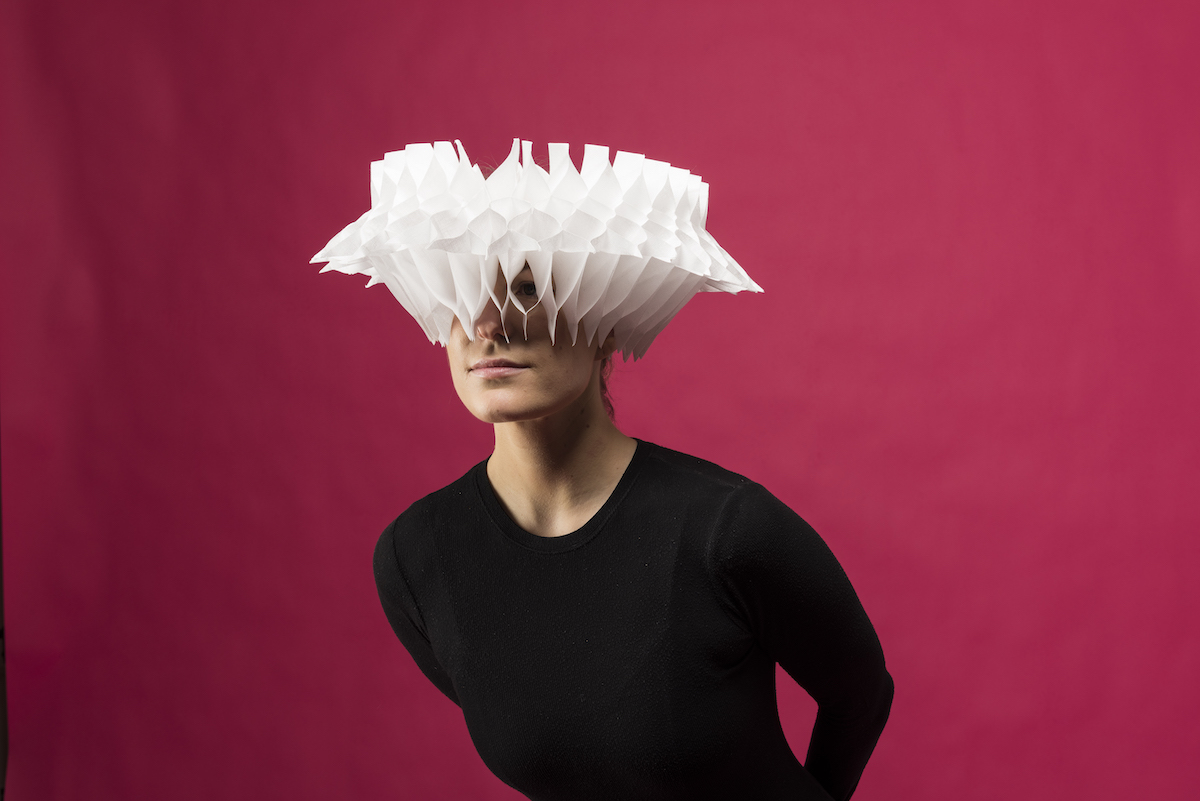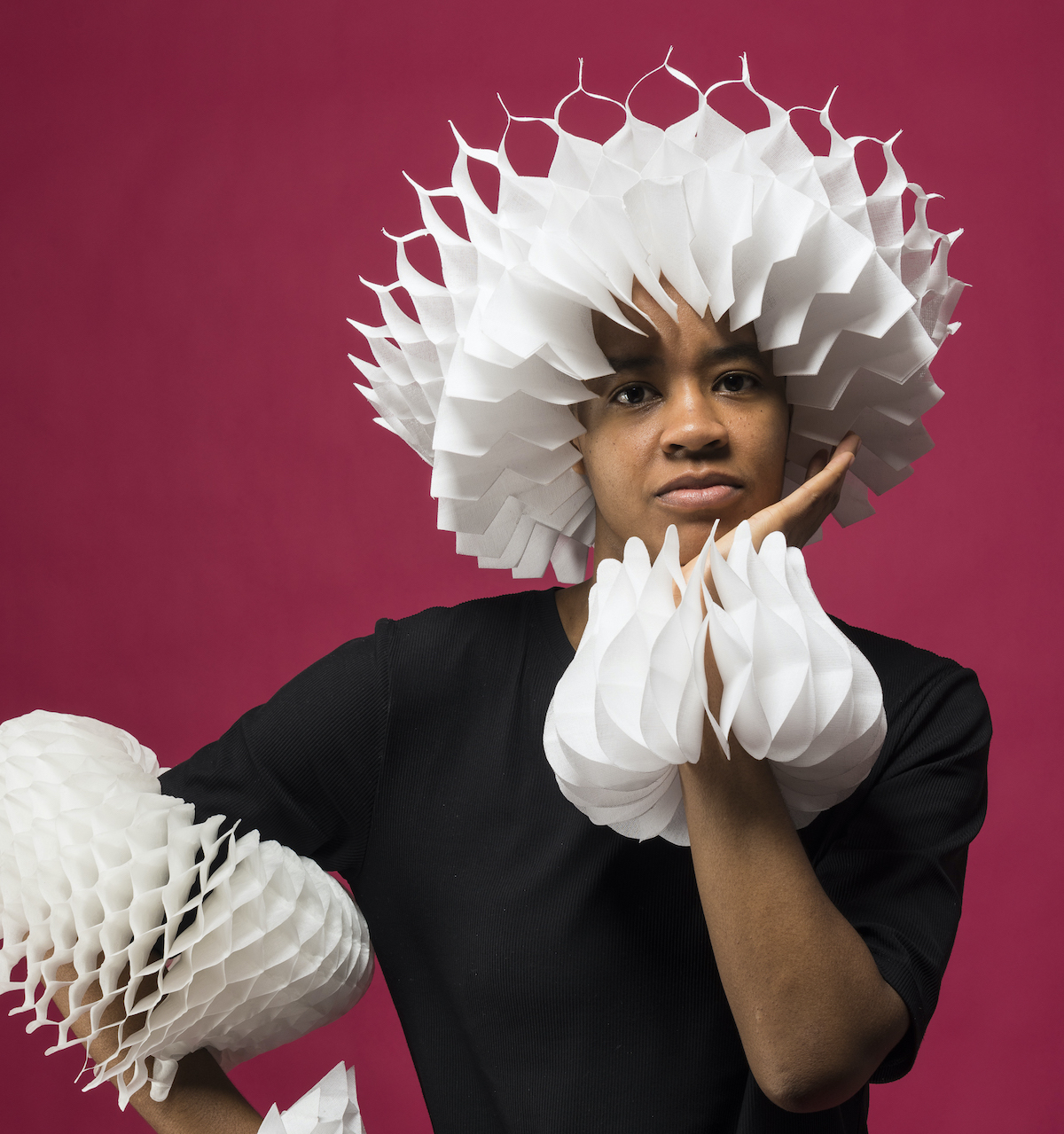Annet Couwenberg’s studio feels like the best kind of art laboratory. Located in the surprisingly spacious basement of the Lauraville home she shares with photographer Dan Meyers, her partner, there is everything a tinkerer could desire within arm’s reach. Bits of laser-cut fibers, plastics, thin wood, and models of digitally printed sculptures are organized neatly on high tables and stacked on shelves in every cranny of the basement. “I see this as my learning space,” Couwenberg says.
Nature’s influence is embedded in the works standing at attention in various stages of completion about the room, breathing like the skeletal remains of past/future organisms. Couwenberg, a titan of fine-art fiber education who’s been teaching for more than 40 years, is influenced by growth and evolution, which she excavates in an exploration of her personal history as a Dutch woman living in America. And over the last several decades, she’s incorporated computer technologies into her textile-based studio practice.
That studio investigation begins with the body, an entry point where traditional craft and technology can meet in the physical world. Couwenberg dreams of being a “digital puppeteer,” making interactive works from responsive textiles. She calls these future pieces living organisms but feels she is a few years from making something that can function the way she envisions, using sensors to respond to human touch, which she says is our “only reciprocal sense and that is an important part of how we work as craftspeople.”
